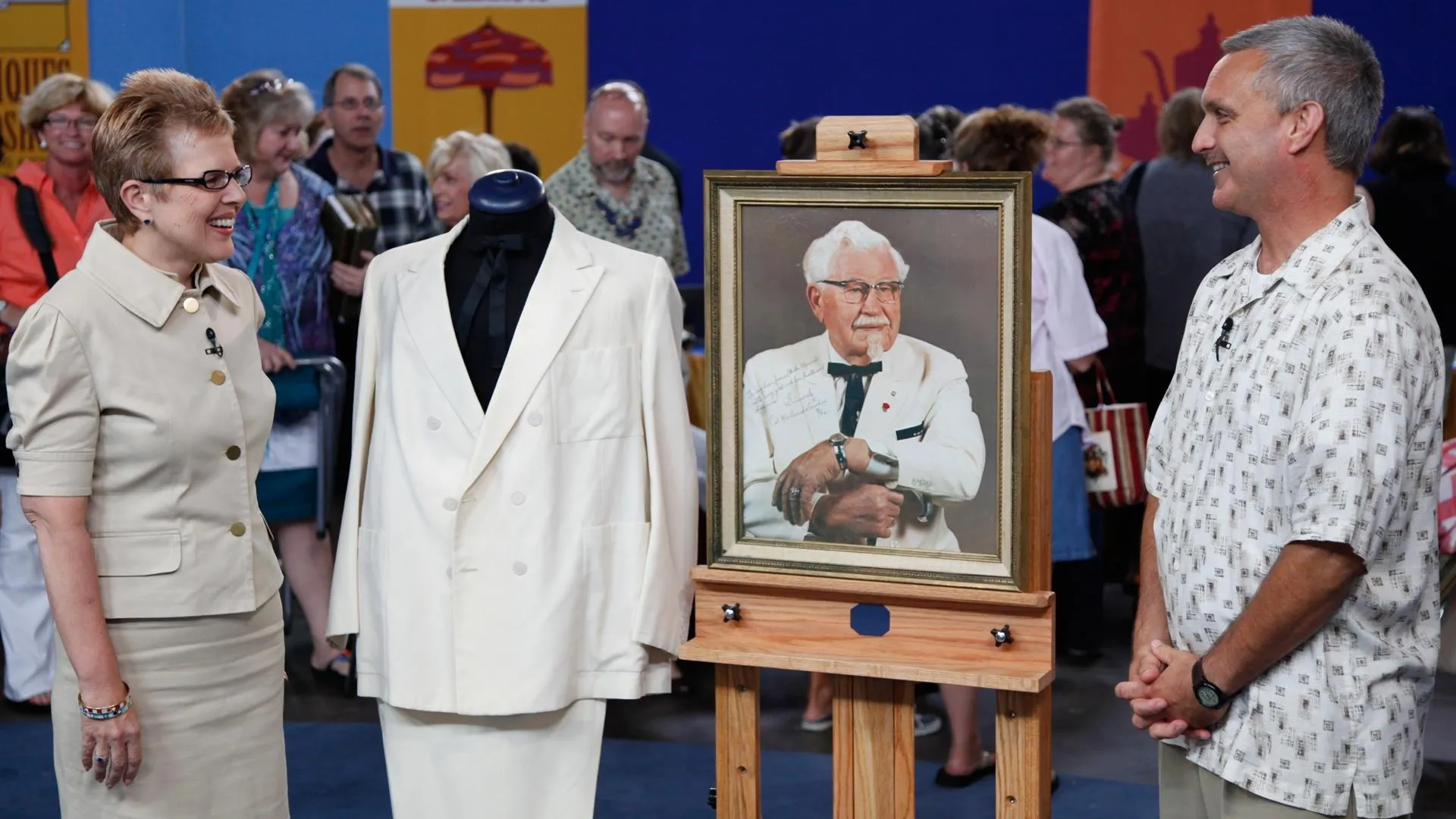GUEST: My sister-in-law gave it to me. Her husband's uncle had had an antique store.
APPRAISER: What do you think it is?
GUEST: I have absolutely no idea. We've put guesses out that it's a portable spittoon or a snuff carrier.
APPRAISER: Now, it's glass, of course. And it's actually a rather olive green color, which is typical of a certain kind of English glass. Especially early English glass. This was blown by a very expert craftsman. The blowing starts here. You can see the open portion and then it comes around, and it's twisted and braced up with another piece of glass. Now what this is called is quilling and rigoring. And it belongs to a late-18th, early-19th century technique.
GUEST: No kidding.
APPRAISER: It's that early.
GUEST: Wow.
APPRAISER: Now, the cover is probably tin. A utilitarian metal. Now, the whole object itself is a utilitarian object. But I have not seen another one of this size maybe in 15 years. That style of all this white glass like little dots in the green, that's generally referred to as Nailsea glass. Now, Nailsea was near Bristol in England. And they were in business in the late 18th century and beginning of the 19th century. And their method of work was by coal. Their furnaces were coal furnaces. The object itself is what is referred to in England as a snuff mole. So you were right.
GUEST: I was right.
APPRAISER: It's a snuff flask, and they are so rare. You can imagine they got broken constantly. And the reason it doesn't have any base on it is because it was meant to be stuck in the pocket, or a saddle bag, or something like that. I think this is worth $2,000 to $2,500. And I would have it insured at $3,000.
GUEST: Oh, my goodness.
APPRAISER: Now what do you think of that?
GUEST: I think that's awesome. That's a lot more than I thought.
APPRAISER: If I owned it, I'd keep it. It's such... one of those wonderful pieces. Now, I don't say that often.










